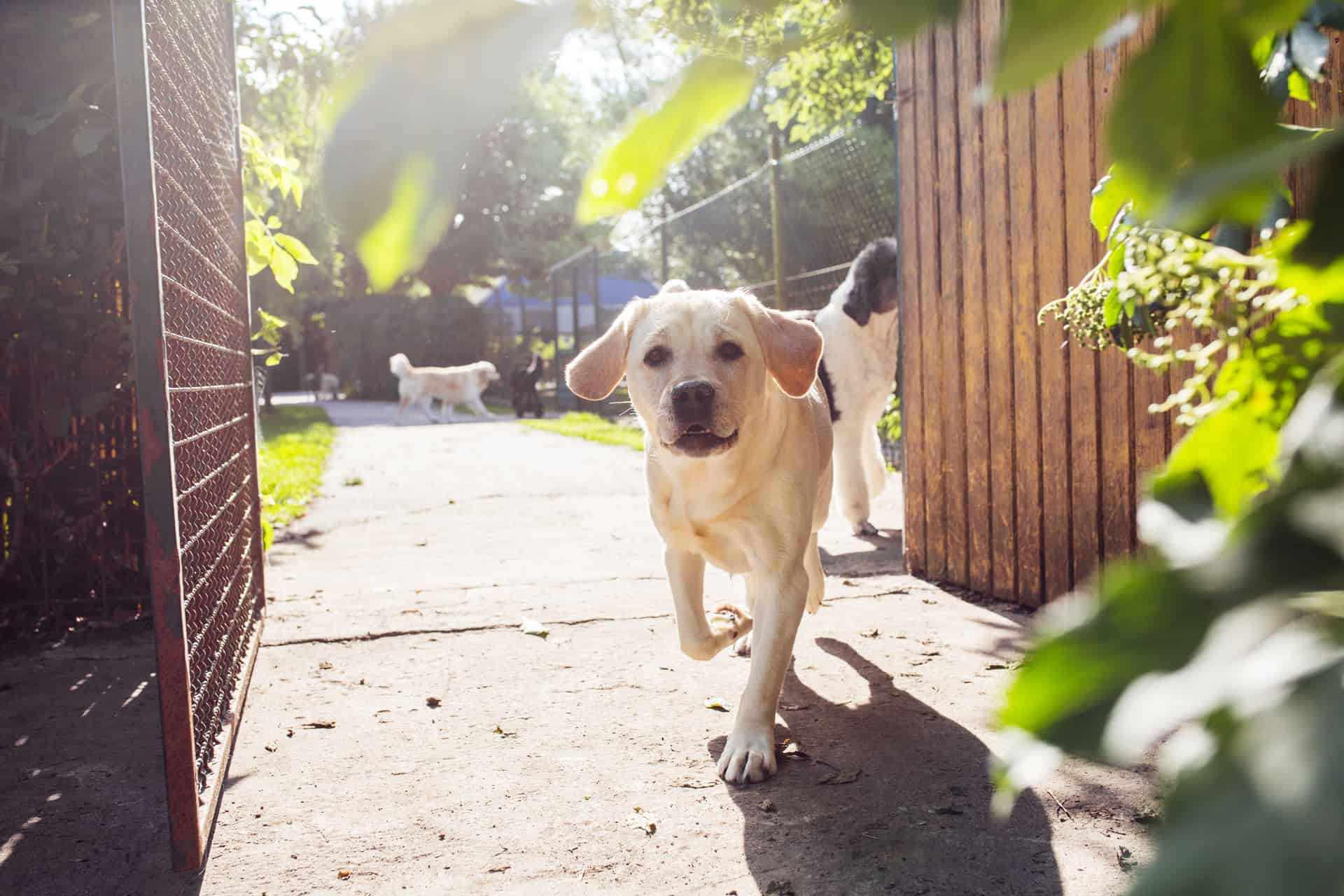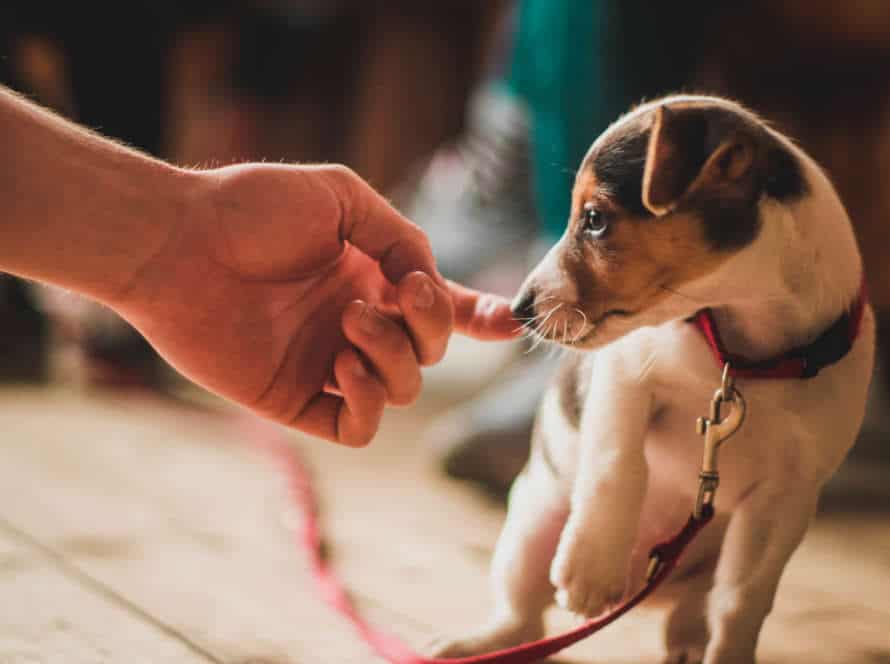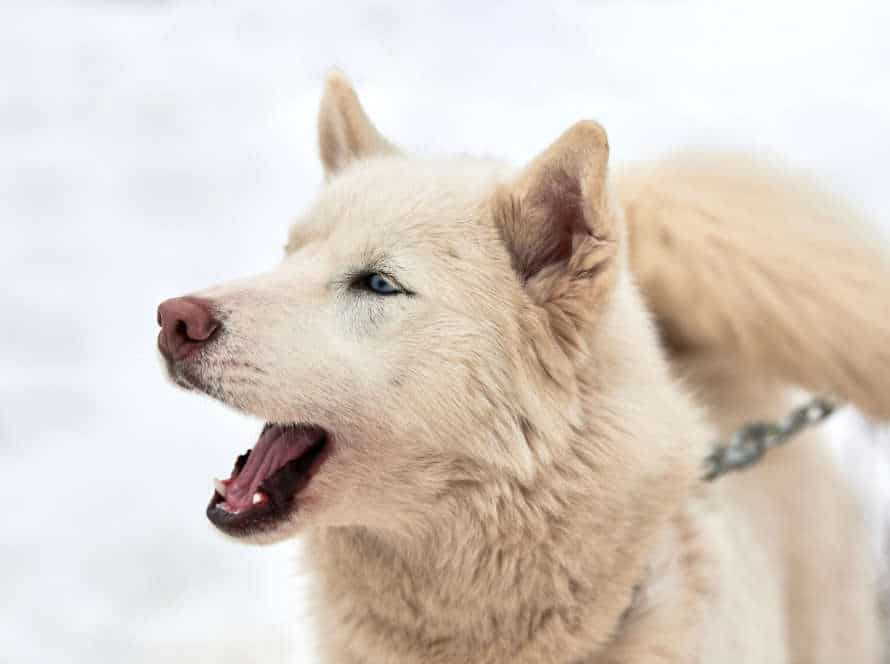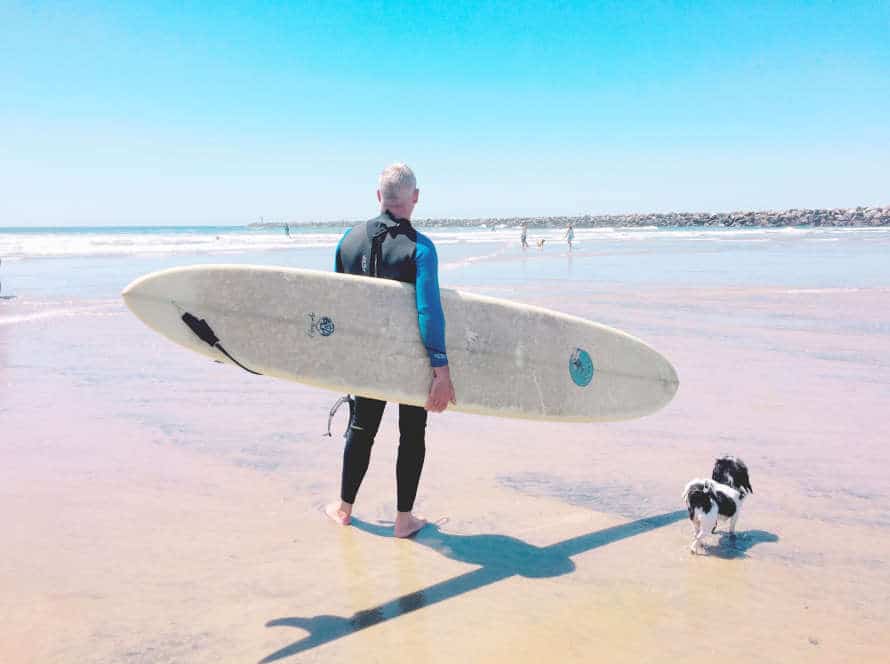When to Leave the Dog Park: Reading Your Dog’s Signals
Realizing when to go from the dog park is vital. Perceiving your dog’s signals is a huge hint that it’s an ideal opportunity to leave. Here are some signs that can help you spot when your canine has had sufficient of the dog park:
- Evasion: If your dog begins to stay away from other canines or rushes back to you rather than engaging in play, it may be a sign they’re uneasy or overpowered.
- Tail-tucking: Hiding their tail between their legs is a clear indication that your dog is disturbed or frightened at the dog park.
- Snarling or snapping: Hostile conduct, for example, snarling or snapping is an unmistakable sign that it’s time to go from the dog park.
- Extreme panting: If your dog is very panting, even after taking a break, it may be a sign they’re worn out and need to leave the dog park.
- Concealing behind objects: On the off chance that your dog begins to cover behind trees, bushes, or even you, it may be an indication that they’re overstimulated and need a rest from the park.
Paying attention to these signs will help keep your dog safe and cheerful at the dog park.
Understanding Your Dog’s Body Language
Understand your pup’s body language to know when it’s time to leave the dog park. This is a must for responsible pet owners. Let’s explore the signals your pup can show us. “How to interpret them?” you may ask. Let’s find out!
Subtle body signals to look out for
Dogs communicate with their bodies. To understand their moods and needs, it’s essential to pick up on their subtle signals. As a responsible dog owner, knowing when to leave the dog park or how to respond to other dogs can stop accidents and make your dog’s life better.
These are some subtle body signals to watch out for:
- Tail wagging: Don’t assume wagging tails always mean happiness. High and stiff tail wags can mean alertness, curiosity, or aggression.
- Yawning: Dogs that are stressed or anxious may yawn too much, or lick their lips—these are calming signals.
- Eye contact: Direct eye contact could be a sign of a challenge or a threat. Dogs often avoid eye contact or look away quickly when they feel uneasy.
- Raised hackles: When a dog feels threatened or is in defensive mode, the fur along the spine and the neck stands up. This is the dog’s way of saying it’s ready to fight or flee.
By noticing these subtle signals, you can understand your dog’s body language better. This way, you can make a stress-free and pleasant environment for both of you.
Understanding your dog’s vocalizations
Dogs communicate with vocalizations. Each has its own meaning, tone, and intensity. Knowing your dog’s vocalizations is important to recognize their needs, emotions, and intentions.
- Barking: Dogs use barking to alert owners of danger or to show dominance. It can also mean boredom, anxiety, excitement, or aggression.
- Howling: Dogs howl to talk over long distances or in response to sounds or stimuli. It can also mean they are lonely or anxious.
- Whining: Whining is a high-pitched sound dogs make to get attention, show anxiety, or show pain or discomfort.
- Growling: Growling is a warning. It shows aggression or discomfort and may be accompanied by raised hair, bared teeth, and a tense posture.
By recognizing your dog’s vocalizations, you can better understand them and respond to their behavior.
The importance of tail position and movement
A pup’s tail position and movements are key signs of their feelings. Pay close attention to understand their body language. A loose tail shows they’re relaxed, while a high and rigid one means alertness or aggression. Tucked tail means fear or worry. Quick side-to-side tail activity usually suggests joy or excitement.
Take into account the context, since different breeds and individual dogs may have different natural tail positions. Also look out for other body signals, like eye contact and ear orientation. This can help detect the dog’s emotional state.
Knowing how to read your dog’s body language can create a safe, comfy atmosphere and prevent conflicts with other dogs or people. A plus: Positive reinforcement training can help your dog learn to communicate better, understand their emotions, and strengthen the bond with the owner. For happy and relaxed experiences in public, this is very important.
Signs of Playful Behavior
It’s crucial to know how to read your dog’s signs while playing, to be a responsible pet owner. Being able to spot when your pup is having fun, or needs a break, is key to having a safe, pleasant time at the dog park.
Let’s look at why it’s so important to pay attention to these signs.
Recognizing playful behavior in dogs
Dog owners need to recognize when their furry friend is being playful. Knowing the signs of playfulness helps you decide when it’s safe to let your pup off the leash or socialize with others. Here are some signs to look for:
- Bouncy body language – relaxed posture and gait, full of joy.
- Playful vocalizations – growls, barks and whines.
- Wagging tail – usually a sign of happiness and play.
- Play bow – lowered front half with rear up.
Remember, not all dogs like to play. Respect their boundaries. Tip: Watch your dog’s body language and act accordingly to prevent unwanted behavior.
Factors that influence playfulness
Factors influencing playfulness in dogs can be understood to know when it’s appropriate to play with your furry friend in the dog park, and when it’s time to go.
- Breed: Some breeds are more playful than others, and this can affect their play style.
- Age: Puppies usually have more energy and thus tend to be more playful.
- Environment: Playfulness in dogs can be encouraged by a fun and interactive environment.
- Socialization: Socialized dogs are more playful and confident than those that lack socialization.
- Health: A dog’s health can affect its playfulness. Signs of illness or discomfort should be observed before playing.
By considering these factors, safety can be maintained and playful activity can keep your pup happy and healthy.
Engaging with your dog in playtime
Playtime isn’t just physical for dogs – it’s mental too. Bonding with your dog, relieving stress, and keeping them active – it’s all achieved through playtime. Here’s what to look out for:
- A ‘Play Bow’: Your dog lowers their front legs, with hind legs upright. This means they want to play!
- Tail Wagging: A happy, excited tail shows they’re keen to play. It might be stiff or relaxed – depends on the breed and character.
- Jumping and Running: Dogs love to jump and run when they’re feeling playful. Throw a ball or toy and get ready to join in!
- At the dog park, keep an eye on your pup’s signals. Fear or aggression towards other dogs? Time to leave and stop playtime.
- Pro tip: Engage your dog daily, and look out for any signs of fear or aggression.
Signs of Aggressive Behavior
Dogs are pack animals. At the dog park, they may show signs of aggression if they feel threatened. This doesn’t mean they are dangerous. It is important to recognize the signs of aggression in your pup. These include growls, a stiffened stance, and raised hackles. Let’s take a closer look at these signs.
Recognizing potential aggressiveness
Recognizing potential aggression in dogs is essential. Knowing your dog’s signals can prevent incidents and promote positive interactions. Watch out for these signs of aggression:
- Stiff body: It’s a signal of tension or discomfort.
- Raised hackles: Hair on a dog’s back and neck rising is a sign of aggression or fear.
- Growling or snarling: Indicates the dog is unhappy or threatening.
- Tail position: A raised or stiff tail, or tail tucked between legs means fear or aggression.
- Direct stare: Staring directly at another dog or person is aggressive.
If any of these signs appear in your dog, leave the dog park and remove the dog from the situation. Preventing aggression is the key for a peaceful and enjoyable dog park experience for all.
The dangers of disruptive dogs
Disruptive dogs can be dangerous. Signs of aggression can include growling, barking, biting, and lunging. Reading your dog’s signals and knowing when to leave the park is key.
Signs of aggressive behavior may be: arched back, raised fur, dilated pupils, pinned-back ears, and tense body posture. If your dog displays any of these, you must leave the park immediately.
Not all dogs are suited for dog parks. If your pup is consistently aggressive, it’s best to consult a professional dog trainer or vet. They can help with training and socialization.
Ways to handle misbehaving dogs
Dealing with dog misbehavior can be tricky. It’s essential to know the signs of aggressive conduct to protect yourself and your pup. Here are some tips for handling misbehaving dogs:
- Stay cool and confident. Dogs sense their owners’ feelings. Getting mad or disappointed will only make the problem worse. Talk in a relaxed yet determined voice to show your dog everything is alright.
- redirect their focus by offering treats or toys.
- Maintain a safe distance. If you come across a dog that is displaying aggressive signals like growling or barking, keep your distance and avoid eye contact.
- Know when to go. When your dog displays signs of fear or uneasiness such as tucked tail or folded ears, it’s time to leave the dog park. Pay attention to your dog’s signals and act appropriately for their safety.
Remember, appropriate training and socialization from an early age can help prevent misbehaviors in dogs. Pro Tip – It’s important to distinguish between playful behavior and aggressive behavior in dogs.
Proper Dog Park Etiquette
Doggy parks are awesome for your pup to hang out with other pups! But not all visits to the park are happy. It’s key to know when to stay and when to go. Especially when it comes to reading your pup’s signals! This is so important for proper park etiquette. Let’s take a closer look at this.
Appropriate behavior for dog owners
Dog owners must practice fitting behavior when visiting dog parks. This keeps it safe and enjoyable for all. Etiquette includes:
- Picking up poo with poo bags; always!
- Supervise your dog to avoid any bullying.
- Make sure your pup knows how to interact with other dogs.
- Be aware of your dog’s signals and emotions. If they seem stressed, leave the park.
By following these rules, we can keep our furry friends happy and healthy, and make a pleasant space for everyone else.
Precautions to take at the dog park
The dog park can be a blast for pets. But, safety and well-being must be taken into account. Here are some things to keep in mind:
- Eye on Dog: Keep a close eye on your pup. Never leave them alone.
- Aggressive Behavior: Look for signs like biting, growling, or raised fur. Leave if you see this.
- Leash: Bring a leash, even if your dog is well-behaved. You may need it.
- Clean Up: Bring plastic bags, and clean up after your pet. Keep it hygienic.
- Know When to Go: If your dog shows signs of discomfort/stress (panting/barking), time to leave. Try again another day.
Interacting with other dog owners
Interacting with other pup owners at the dog park can be a great chance for your furry mate to mingle and make new buddies. But it’s important to practice proper dog park manners to ensure everyone’s joy and safety. A key factor is knowing when to leave the dog park, based on your pup’s signs.
Here are some indications that it’s time to leave the dog park:
- If your pup is showing fear or nervousness – like cowering, growling or barking a lot.
- If your pup is being hostile towards other dogs or people – like nipping, biting or jumping too much.
- If your pup is tired and showing signs of weariness – like panting a lot or laying down often.
- If your pup is being bullied or scared by other dogs, and the situation doesn’t improve.
Prioritize your pup’s safety and wellbeing over socializing. If you see any of these signs, it’s time to go to stop any unpleasant situations.
When to Leave the Dog Park
At the dog park, it’s a must to understand your dog. Their behavior can tell us so much. Recognizing the signs that signal time to leave can help avoid distress and aggression. This section will cover the signs you should look for and when to exit the dog park.
Assessing your dog’s behavior during park visits
Checking your pup’s behavior at the park is a must for their safety and comfort. Learning to recognize your dog’s signals can help you know when it’s time to go. Here are a few things to watch for:
- Prolonged Barking: If your pup is barking for a long time, they might be too excited or angry.
- Tail Tucked Between Legs: A tail tucked between its legs means fear or unease.
- Aggressive Body Language: Raised fur, a rigid body, and a fixed gaze mean they’re ready to fight.
- Excessive Mounting: Dogs do this to show dominance, but too much can lead to trouble.
- Disinterest in Play: If your dog isn’t having fun or has withdrawn, it’s time to leave.
If you spot any of these signs or anything else unusual, take your pup and leave the park as soon as possible.
Knowing when it’s time to call it quits
Dog parks can be great for socializing and exercising your pup. But, it’s important to know when it’s time to go. Knowing signs that your dog is ready to leave can stop overstimulation or frustration. Here are some common signs that it’s time to leave:
- Panting heavily, excessive drooling or lying down. These can mean your dog is too hot or tired.
- Growling, snapping or lunging. This can mean your dog is feeling threatened or uncomfortable.
- Not interested in playing. Seeking shelter or no interest in other dogs can mean your dog is ready to leave.
Pay attention to these signs to keep your pup happy and healthy.
Alternatives to the dog park for your pet’s exercise and socialization.
Dog parks are a great spot for pups to mingle and get some exercise. But there are other options too!
- Take your pup for a walk or jog. It’s an awesome way to bond and get active. Plus, you can always switch up the route for something new.
- Have a playdate with other dogs. Have a friend with a pup over, or check out local dog groups for meet-ups.
- Sign your pup up for sports or classes. Agility, flyball, obedience, scent work – the possibilities are endless. These activities help with socialization and further your pup’s development.
Remember to keep an eye on your pup and know when it’s time to leave the dog park. That way, both pup and owner can have a positive experience.
Frequently Asked Questions
1. How can I tell if my dog is getting overwhelmed at the dog park?
If your dog starts to exhibit signs of stress like excessive panting, drooling, or yawning, or tries to hide behind you, it’s time to leave the dog park. Additionally, if your dog is being constantly chased or harassed by other dogs, it’s best to remove them from the situation.
2. What should I do if I notice signs that my dog is becoming aggressive?
If you notice your dog showing signs of aggression, like growling, snarling, or standing stiffly and staring at another dog, you must immediately remove your dog from the park. If the behavior persists, you may need to seek the help of a professional dog trainer.
3. How long should I stay at the dog park with my dog?
Your dog’s energy level and behavior will determine how long they can handle being at the dog park. In general, limit your dog’s time to 30-60 minutes, and keep an eye out for any signs of stress or fatigue.
4. What are some other warning signs to look for?
If your dog is shaking, has its tail tucked between its legs, is whining or barking excessively, becomes overly aggressive, or is showing signs of fear, it’s time to leave the dog park immediately.
5. Should I bring treats with me to the dog park?
Bringing treats to the dog park can be a good way to reinforce positive behavior, but you need to be aware of other dogs that may be there. Some dogs may become aggressive if they see another dog being rewarded with treats. It’s best to use treats in a safe, neutral location just for your dog.
6. Should I take my dog to the dog park if they’re not well socialized?
If your dog is not socialized, it is not safe to take them to a dog park. Start with basic training and socialization in a controlled environment with a professional dog trainer. Once your dog is comfortable around other dogs, you can start to introduce them to the off-leash environment of a dog park.







